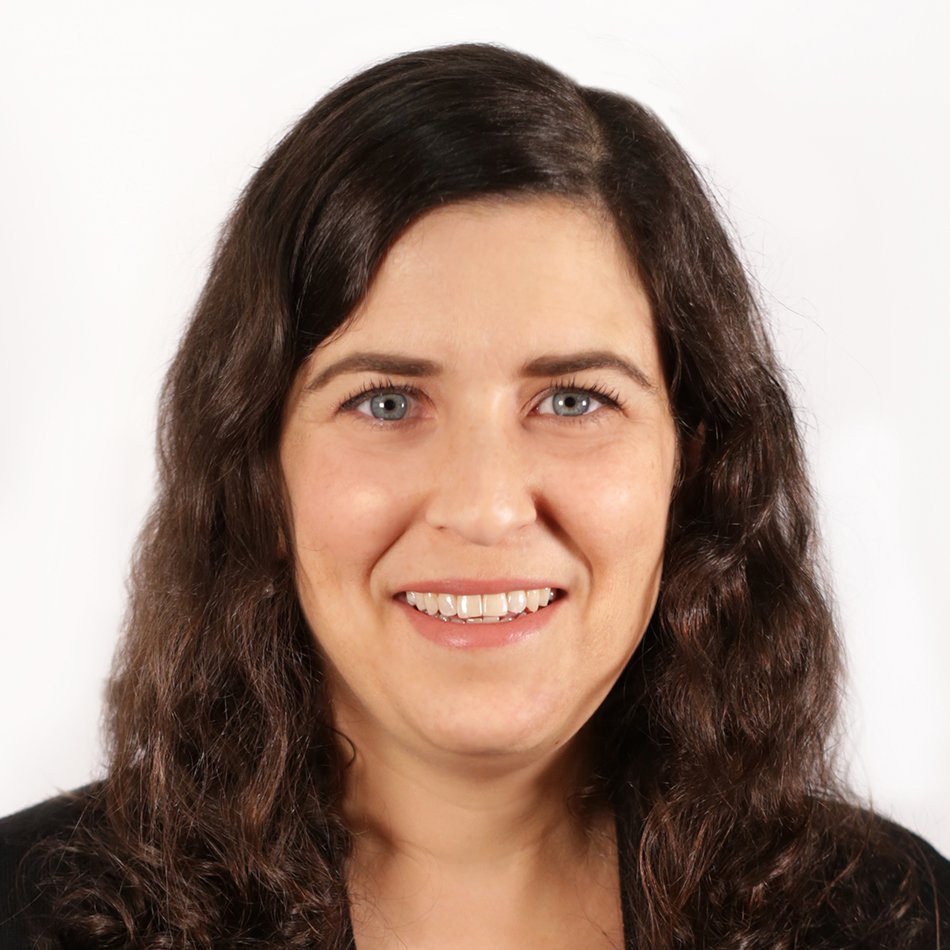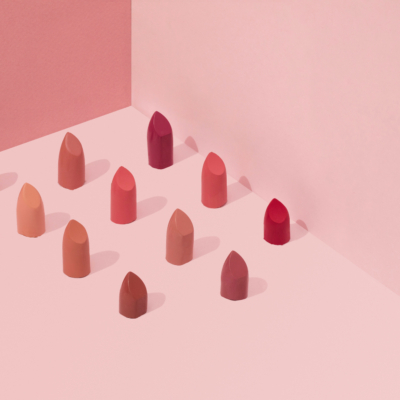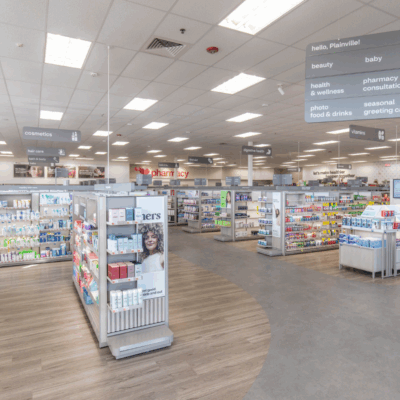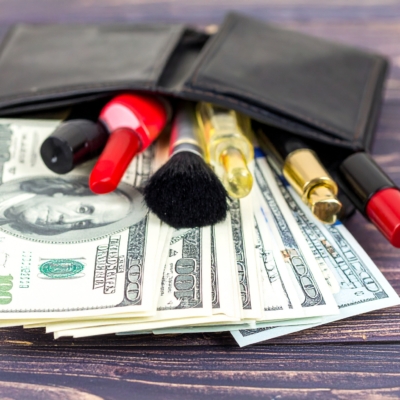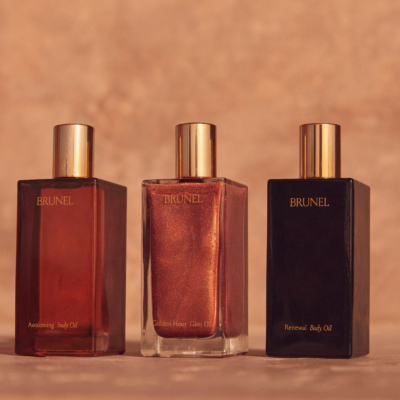
Is Beauty’s Founder-Led Era Over?
In a June article, The Business of Fashion declared the end of the founder-led era. In response, Tamar Koifman, a beauty strategy advisor and marketing leader, asked on LinkedIn, “How could we be so naive?”
She continued, “For years, we watched beauty brands launch at a breakneck pace.
▸Founder-led.
▸DTC-first.
▸Inclusive-for-all.
▸Influencer-powered.
▸Made-for-TikTok.
And we bought into the story: that authenticity, virality, and niche positioning would somehow translate into billion-dollar longevity.
But when I came across this chart from The Business of Fashion and McKinsey & Company, it struck me just how off that dream really is.
Of the 206 beauty brands making over $250M in 2024, only five founded since 2005 have reached $1B+. That’s just 2%.
The reality?
→ Hype doesn’t equal scale. Founders can create excitement, sure, but very few build enduring businesses that last generations.
→ Heritage still dominates. Brands like Estée Lauder, L’Oréal Paris, MAC, and Nivea continue to lead because they have infrastructure, not just Instagram.
→ Consumers buy what works. Quality, price, and performance outweigh identity or values.
We overestimated how far visibility and vibe could go, and underestimated what it really takes to build something lasting:
▸Operational excellence.
▸Infrastructure.
▸Repeatable value.
▸Scale.
What do you think?
P.S. Just to be clear, I’m alllll about beautifully crafted, founder-led brands with a homegrown feel! Just let’s not confuse cult favorite with global category leader.”
In this edition of our ongoing series posing questions relevant to indie beauty, we pick up on Koifman’s post and the conclusion Business of Fashion draws from its recent beauty industry report with McKinsey. Like Koifman, we asked 10 beauty entrepreneurs, consultants, investors and executives the following: What do you think? Have the beauty industry and brand founders been naive about the resonance and potential of founder-led brands? Do you believe the founder-led era is over?
- Andrew Ross Senior Advisor and Venture Partner, XRC Ventures
In continuing to develop my industry persona as "grumpy old man," I think the chart tells us what we already know: It takes global infrastructure, capital and most of all time to build $1 billion-plus brands. What it doesn't tell us is the more interesting story.
First, "founder-led" is a problematic designation. Is Glossier more founder-led than E.l.f.? I suspect Tarang Amin has more direct influence on culture and strategy than Emily Weiss. Estée Lauder was founder-led for decades and remains inspired by Estée and Leonard's vision. The label obscures more than it reveals.
Second, this data likely reflects M&A dynamics as much as organic scaling challenges. Many promising brands, including founder-led, get acquired before reaching $1 billion independently by the very heritage conglomerates dominating this chart. That is their explicit strategy.
Third, and most importantly, the chart misses the real story: Share trends for many of these large, established brands aren't pretty, especially in the U.S. They relied too heavily on distribution scale and forgot how to market authentically to consumers. Compare Bobbi Brown's eponymous brand with Jones Road. That's where founder-led brands are winning.
Tamar is right about operational excellence and infrastructure being prerequisites for global scale. But she's missing that many legacy brands are losing share in key markets to nimble competitors who know how to build genuine consumer connections, excitement and loyalty.
Bubble doesn't resonate with its loyal consumers because it's founder-led. It works because of authentic communication and brand voice, quality products at compelling value and engaging brand community. Legacy brands won’t stay at $1 billion if they don’t know how to do that effectively in a local- and channel-relevant way.
The era of direct brand-to-consumer communication isn't over. It's just beginning, and whether that comes from founders directly, through community or another vehicle that we haven’t even thought of yet, time will tell. The question isn't just whether founder-led brands can achieve global scale, it's whether legacy brands can remember how to stay relevant.
- Julie Kucinski Consultant and Co-Founder, Wile
I’m not sure about naive, but definitely overly band-wagoned. The push—by investors, advisors, partners, culture, the whole apparatus—to make founders constantly feed the content/hype beast is a key offender. If that worked, more creator-led, non-celeb brands would have succeeded.
It looks like founders are killing it, then you find they’re barely hanging on. Exhausted. The operational, unsexy parts of the business got time starved with no real ROI. (There’s a lot of talk in the food/bev founder space about this right now btw.)
Meanwhile, customers are bombarded. They only notice if you’re Hailey Bieber or hitting their FYP in the right way. Dupes are queen. No one really knows what will hit now, IMO.
There’s always a place for strong founder-led brands that have a real reason to exist, where the founder isn’t just a mouthpiece but brings real value, especially in underserved niches.
It takes a lot of ego and belief to start a brand, yet humility to make the right moves. There's so much great product out there already. Many founders who can easily raise early capital from uninformed sources struggle or get stuck, but don’t want to make the necessary moves, even with industry experience! It’s essential that founders add operational C-suite, value-added investors and the right channels at the right time.
Crown Affair seems to be doing the right things. I’m watching Roz Hair, to name two.
But the days when you could just get an off-the-shelf formula from a co-packer and win on charm are probably gone. It’s almost too easy to create a product and launch a brand.
What I’d love to see: New forms of value-added strategics where established beauty leaders partner with early mid-stage founder brands and each side only does what it does best. Founders could retain more of their business, brands avoid post-acquisition slumps, and the Bigs retain more value, too. A girl can dream!
- Cristina Nuñez Co-Founder and Managing Partner, True Beauty Ventures
The idea that the founder-led era is over feels like an oversimplification (with a sprinkle of clickbait). Yes, the BoF x McKinsey research is a powerful reminder of how long it truly takes to build a brand that reaches global scale. Most of the $1 billion-plus beauty brands were launched decades ago, and only a small fraction of newer brands have reached that level. But that doesn’t mean founder-led brands have failed. It means brand building is hard, and unicorn outcomes are rare by design.
We also shouldn't use $1 billion in revenue as the sole definition of success. There are many meaningful milestones between $0 and $1 billion. A brand can generate strong cash flow, create generational wealth, or exit to a strategic buyer without ever hitting that benchmark. Growth doesn't have to mean global domination.
What we should retire is the romanticized version of the founder story. Founder life is not glamorous. It’s a constant grind of decision-making, risk-taking and personal sacrifice. The Instagram version of entrepreneurship rarely reflects the reality. Building a successful brand at any scale requires leadership, operational discipline and the right team.
It’s time to recalibrate what it means to be a founder, what it means to back one and why the consumer should care. Founders are powerful drivers of early momentum, and they always will be. They build community, set the vision and give the brand its soul.
But they are not the reason consumers keep buying. Performance, price and product-market fit matter more. A compelling founder story may spark interest and drive early growth, but long-term success comes from putting the consumer first and delivering consistent value.
So, no, the founder-led era isn’t over. We’ve just entered a more grounded chapter, one where founders aren’t the brand themselves, but the catalyst behind it. The strongest ones know how to build companies that can grow beyond them. Those are the businesses that endure. And those are the ones worth backing.
- Elana Drell-Szyfer Beauty Executive, Mentor and Adjunct Professor, Fashion Institute Of Technology
The founder-led era is not over. Today, successful brands sell not only product, but point of view, community, lifestyle and curation. Who better to create that ecospheric community (economic atmosphere in community) than a founder?
Creative vision is often singular. This makes that type of creativity at inception difficult for a larger corporation where there are many points of view and hierarchy/approvals, etc.
What differentiates the founder brands that scale versus not is building a great team to execute the vision. Once a tipping point is reached in the cultural zeitgeist for a founder-created brand, the ability to "produce" and "scale" takes many, not one.
The most successful founder brands have created vision and brand articulation that is so precise and understood that it can be scaled and executed by many because the direction is so clear. Excellent execution by experienced experts empowered by the founder is what takes a brand from good to great to the icon status.
- Ryan Babenzien Founder and CEO, Jolie
Not only do I think founder-led brands will continue to thrive, I think this type of thinking is exactly why there are so many zombie brands right now. Most brands should not even think about doing $1 billion in revenue!
For starters, the McKinsey piece makes the assumption that it's important that a brand reach $1 billion in annual revenue, and if it doesn't, it's somehow not successful. That is the problem with the entire market!
The world is evolving and creating $1 billion annual revenue business is a byproduct of how those brands are funded and the ecosystem of bankers, lawyers and capital that needs brands to reach $1 billion in revenue for all of them to feed off the brand ecosystem. This is a highly dated model, and there is a new wave of founder brands arising: bootstrapped, more profitable, less reliant on the traditional ecosystem and yes smaller in revenue.
However, for a founder to have $100 million business that makes 20% EBITDA who owns most of that company, I can assure you that it is a much better outcome than a founder who has a $500 million brand, but owns 10% of the company and is behind a line of preferred investors. One of these feeds the system, the other feeds the founder.
Today more than ever, founders will be able to scale profitable businesses, leveraging AI and agents with fewer employees, with less capital raised. This may not be good for VC, this may not be good for strategics, and this may not be good for bankers, but it’s great for founders.
I’m sure when Estée Lauder founded her brand or L'Oréal was founded, there wasn't a deck that outlined a path to $1 billion in revenue. My guess is they just wanted independence and had the skill to start a company. Founders need to get back to that idea and focus on building a profitable company rather than be convinced that, if you don't have a $1 billion revenue, you have not scaled.
I'll leave you with this Teddy Roosevelt quote. I’m sure you can guess who the founders are and who the consultants are: “It is not the critic who counts; not the man who points out how the strong man stumbles, or where the doer of deeds could have done them better. The credit belongs to the man who is actually in the arena, whose face is marred by dust and sweat and blood; who strives valiantly; who errs, who comes short again and again, because there is no effort without error and shortcoming; but who does actually strive to do the deeds; who knows great enthusiasms, the great devotions; who spends himself in a worthy cause; who at the best knows in the end the triumph of high achievement, and who at the worst, if he fails, at least fails while daring greatly, so that his place shall never be with those cold and timid souls who neither know victory nor defeat.”
- Sam Cheow Founder, Stealth Advisory & Brands
For much of the past decade, beauty’s biggest stories have centered around founders and often their faces and careers. We were told this was the golden age of authenticity where a brand’s success would be powered not just by product, but by a story, a person and a promise. Founder-led. Influencer-powered. DTC-first. TikTok-approved.
We believed the hype. Consumers bought the vision. Investors bought the velocity. But, now, something is shifting.
According to a recent report by The Business of Fashion, of the 206 beauty brands generating more than $250 million in annual revenue, only five founded since 2005 have crossed the billion-dollar mark. Just five. The rest? Many have faded. Some are stalled. Others were never built for scale or grounded in realistic revenue expectations.
Founder-led isn’t dead. It’s just been diluted. What once signaled hands-on vision, product rigor and entrepreneurial obsession has too often become a veneer, a stylized façade of storytelling built more for the campaign than the consumer.
Private equity has commoditized the playbook: identify a celebrity with cultural reach, partner with an agency, build a brand identity overnight and launch with high production value. What’s often missing? A real product philosophy. A point of view. A founder who’s actually in the room when it matters.
Rare Beauty is a rare exception. Selena Gomez’s role isn’t just performative. She shows up consistently, not just on camera, but in product development, creative direction and overall brand ethos. The brand’s simplicity and emotional clarity work because they are intentional.
Behind that success is Joyce Kim, a veteran product developer I worked with at L’Oréal, ensuring that every formula lives up to the brand’s promise. That’s what founder-led should look like.
More often, we see the opposite: a celebrity who posts inconsistently. A brand driven by aesthetic moodboarding. A campaign that costs more than the R&D behind the product itself. The result? Beautiful packaging, vague claims and a short runway.
The disconnect between brand theater and product truth is where trust breaks down. Today’s consumer, especially gen Z, is too discerning to be swayed by aesthetics alone.
They want performance, purpose and proof. They know the difference between someone who uses a product and someone who created it. That’s why brands like Fenty, MAC and Charlotte Tilbury continue to earn loyalty. They’ve established credibility through consistency, quality, and a clear identity.
MAC has always prioritized artistry. It may not chase every TikTok trend, but it rarely misses when it comes to technical execution. Charlotte Tilbury is not just a name on a label, she is the engine of the brand, involved in every detail from product development to education to global expansion. Her visibility isn’t contractual, it’s personal.
Even legacy brands like Clinique, Lancome, Maybelline and L’Oréal Paris demonstrate the value of transparency. Their celebrity partnerships are positioned as advocacy, not authorship. Consumers may not know every detail of the development process, but they know authenticity when they see it and when they don’t.
This is where many founder-led launches falter. Founders who aren’t meaningfully involved in product creation often struggle to sustain credibility. It’s not enough to approve a shade range or say, “This feels amazing.”
Breakthrough beauty products require a builder’s brain, someone who’s gone through rounds of formulation, negotiated regulatory nuance and thought through scale. Without that, the brand is just story, and story alone doesn’t scale.
Too many new brands are incubated by agencies with strong visual instincts, but limited technical expertise. They can build a brand identity, but not a formula with staying power. The result is a wave of well-branded launches that look great on shelves and feeds, but fade quietly when repurchase doesn’t happen.
In today’s beauty landscape, brand equity isn’t just built on design or distribution. It’s built on execution. That demands what I call “product soul,” an internal compass honed through real experience, curiosity and rigor. It can’t be outsourced. It has to be lived.
Fantasy may sell the first unit, but function drives the second and the third. In this post-hype era, the beauty brands that endure won’t just have founders. They’ll have foundations: product development expertise, operational depth, product credibility and a reason to keep showing up.
- Tina Bou-Saba Investor
The relative ease of launching, but certainly not scaling, a beauty brand has contributed to a massively crowded and saturated market for beauty brands today. Of course, many of these brands have been founder-led, with influencers, creators, celebrities, etc., leveraging their followings to gain early traction for their brand. Leveraging these existing communities can be a powerful way to break through the noise and drive early momentum for a brand.
But this should not be confused with longevity. In fact, I am concerned that beauty as an industry has become so focused on satisfying consumers’ desire for constant newness that we sometimes risk under-investing in activities that support true brand longevity. For example, meaningful innovation, operational excellence, long-term strategy and infrastructure including team.
To be clear, some brands have done an excellent job of this. But it is challenging to make these investments when so many resources are dedicated to jumping on the next hype cycle. Moreover, frequently near-term success at retail is dependent on playing into these quick trend cycles. This isn’t anyone’s “fault,” it’s simply how the industry has evolved given all of the factors at play today.
I think that there is an important structural element to this, specificallythe fragmentation of consumer preferences suggests that the optimal scale for successful brands may simply be lower today than it was in the heyday of big legacy brands like Estée Lauder and Clinique.
Only true category creators (e.g., Touchland, Supergoop) and brands with massive creator followings (e.g., Rhode) are likely to be valued at or around a billion dollars. This is not a bad thing! It simply means that we need to optimize for success at sub-$500 million, for example. Brands that raise external funding should be capitalized accordingly.
I don't believe that this points to the end of the founder-led era by any means. It simply means that we need to be realistic about the potential scale of most such brands and the importance of surrounding founders with critical business resources including experienced teams and operational infrastructure.
- Rachel Hirsch Founder and General Partner, Wellness Growth Ventures
To me, the question isn’t “Were we naive?” it’s, “Why did we confuse access with endurance?” Over the last five years, Sephora became the endgame. So many promising indie brands—often founder-led, with a beautiful Instagram and a compelling story—secured shelf space and even funding on the strength of their early momentum. But, once inside, few had the operational backbone, margin structure or retention playbook to sustain velocity at scale.
We mistook virality for viability. Brands were built to launch, not last. Fueled by aesthetic, press buzz and influencer UGC, they raised at valuations that assumed scale without proving it. Now, as funding dries up and velocity stalls, many will quietly disappear. Not because they weren’t good, but because they were optimized for the wrong endgame.
This chart isn’t shocking, it’s sobering. Only five founder-led beauty brands since 2005 have cracked $1 billion in sales. That’s not failure. That’s a reflection of the real math behind what it takes to scale: distribution, infrastructure, cash flow, gross margin discipline.
The founder-led era isn’t over, but the fantasy of founder-led brands being inherently superior or destined for billion-dollar exits should be. What we’ll see next is a return to fundamentals: sustainable businesses, thoughtful growth and a shift from “sexy” launches to boring, brilliant execution.
I say this as someone who bought into the dream, but the new class of founders will be wiser because they have to be.
- Chris Hobson President and CEO, Rare Beauty Brands
I don’t believe the founder-led era is over. I believe it’s evolving. What we’re witnessing isn’t the shortfall of founder-led brands, but a reckoning with the difference between launching a brand and building a business.
The last decade encouraged a wave of fast-moving entrants, enabled by contract manufacturing, DTC platforms and social virality, but few of those brands were designed for endurance. That’s not naivety, that’s a reflection of an ecosystem that prioritized short-term visibility over long-term viability. And it's a reflection of a bubble mentality reminiscent of the dot-com era.
Koifman is absolutely right that hype doesn’t equal scale. I would add that there’s also a major difference between a brand and a product with distribution. A true brand is the sum total of the consumer’s experience: the product, the packaging, the results, the story, the tone. Over time, those interactions build trust and brand equity.
Like any relationship, it deepens through consistency and repeated positive outcomes, all of which requires excitement, efficiency and long-term staying power, elevating a product into a brand.
That’s what enduring brands do. Legacy players have long understood this, and founder-led brands are learning it, too. So, no, the founder-led era isn’t over. It's just growing up.
- Carrie Steinberg Fractional CMO and Brand Advisor
The founder-led era isn’t over, it just demands more. In prestige beauty, consumers still want to invest in founder-led brands, but quality, price and performance are table stakes. Today’s consumer wants to feel part of something bigger—a mission, a movement, a story—and founders are uniquely positioned to build that emotional connection and trust in a market with infinite choices.
But expectations are higher, especially for female founders, who need to be visionary but relatable, polished but real and business-savvy but purpose-driven. Founder-led brands still matter, but now they have to work harder to earn it. Quality, value and a reason to care aren’t optional anymore; they’re the baseline.
If you have a question you’d like Beauty Independent to ask beauty entrepreneurs, executives, investors and consultants, please send it to editor@beautyindependent.com.
